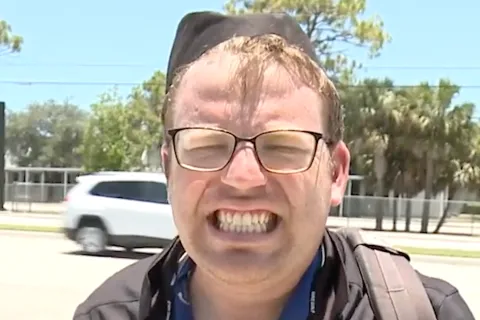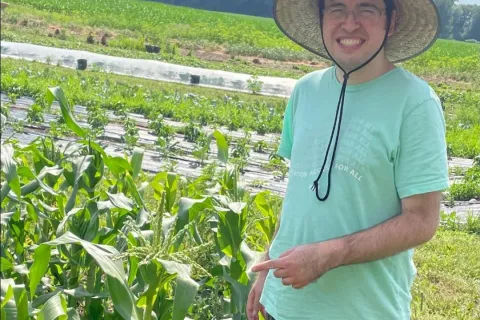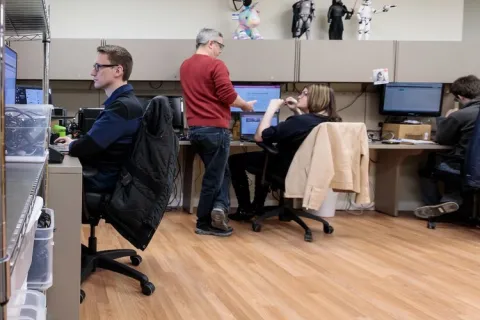Financial services: A personal mission to give back to the autistic community
By Andrew Komarow, MSFS, CFP®, ChSNCAndrew Komarow was diagnosed with autism at age 28. As Founder and President of Planning Across the Spectrum, he focuses his expertise in financial planning to help clients and families affected by ASD gain financial security now and for their future.
My story doesn’t follow the typical conventions that come with an ASD diagnosis. As a child born in the 80s, I grew up in the time where ASD was becoming a more commonplace and mainstream diagnosis. That being said, it still missed me. At 28 years old after a lifetime of wondering why I felt so “different” from everyone else and years of misdiagnosis and treatment, I was told that I was on the autism spectrum.
My mother noticed early-on that I wasn’t quite like the other children I was surrounded by. As a baby, I would become fixated on things like ceiling fans and mobiles for hours, and I had no interest in other people. At four years old, I rarely talked and had little interest in playing with other children. By the time I started school, I was only interested in very analytical tasks. Building things and taking things apart could occupy me for hours at a time. My teachers noted that I had difficulty moving between tasks in class because I would lock-in on what I was doing and become incredibly anxious and angry if someone moved me to something else. I didn’t make friends very easily and was even held back in school because my teachers thought that I may bond better with younger kids.
While my mother raised concerns, my father bit back. He argued with teachers who told him I wasn’t hitting social milestones. He didn’t believe there was anything to look into and fought my mom every time she tried to get help for me. Even when my mom secretly sought help with my behavior, she was told that I was just a “spirited kid” and given the same sort of response my father gave her every day: I’d grow out of it. I needed different types of discipline, a different diet, different friends, different activities— the entire gamut. Well, I didn’t grow out of it.
I had trouble throughout school. I had a high aptitude for subjects like math and science but didn’t have the patience to write. I could spend days upon days building computers and coding software, but I had zero interest in music or art. I loved to solve problems and answer questions—math, science, tech issues. I read through finance journals and articles as if they were novels but never wanted to read what my teachers wanted me to read.
When it became apparent that I wasn’t going to graduate high school in the “typical” way ( much to my parents’ dismay), I ended up taking the GED assessment and moving out. At 21, I got a call from my uncle to come interview at the financial planning firm where he worked. My interest in finance had never waivered, and I saw this as the opportunity I had been waiting for. I channeled every ounce of energy I had into that job. I ate, slept and breathed finance. I was completely in my element. Finally, a chance to do exactly what I wanted and what I was good at and, honestly, I rose quickly. I was the top producer in my class within my first 6 months and finished at the top each year I was there. I couldn’t get enough of it. I sought out every license and designation I could and even pushed my way through a master’s degree in financial services.
Eventually I knew that I had outgrown the firm and decided to branch out and start my own financial planning business. A few years into that business, when I got my ASD diagnosis, I started to look into how I could do something within the ASD community. I learned of the multitude of services needed for children with ASD. I also learned that there while there are lots of services geared toward children in school (and thus, often paid for by the schools), there is almost nothing for adults, and the strain this puts on families and care teams is astronomical. About 50,000 people on the spectrum age out of school-based services each year.
I thought maybe I could create a business that would fill the void in aiding families with children and adults on the spectrum in planning their financial futures. And as someone on the spectrum myself, I could provide a unique insight not typically found in financial services. That is when Planning Across the Spectrum (PATS) was born.
Planning Across the Spectrum is designed to help families affected by ASD plan their financial future. It is also designed to help individuals on the spectrum become financially independent. We do educational seminars and advocacy events on everything from basic money skills, to education planning and benefits, to transition planning. We have employees on the spectrum who can offer their unique perspectives. And we’ve branched outside of finance to educate families on topics such as learning to drive, independent living and housing, and legal planning among others. We even offer ongoing support and coaching with regular consultations and mentorships. PATS has really evolved to be more than a financial planning firm; we are a team of people who really want to delve into assisting in any way we can, because we have been there.
Planning Across the Spectrum has given me a sense of purpose that I didn’t realize I was missing. I love that I can channel my special interest in finance into a community that I am so passionate about not only participating in, but giving back to. In the short span of time I have been a part of the ASD community, I have found such a wealth of information, answers and comradery. I’m glad that I can, even in the smallest sense, give some of that to others in the community.









